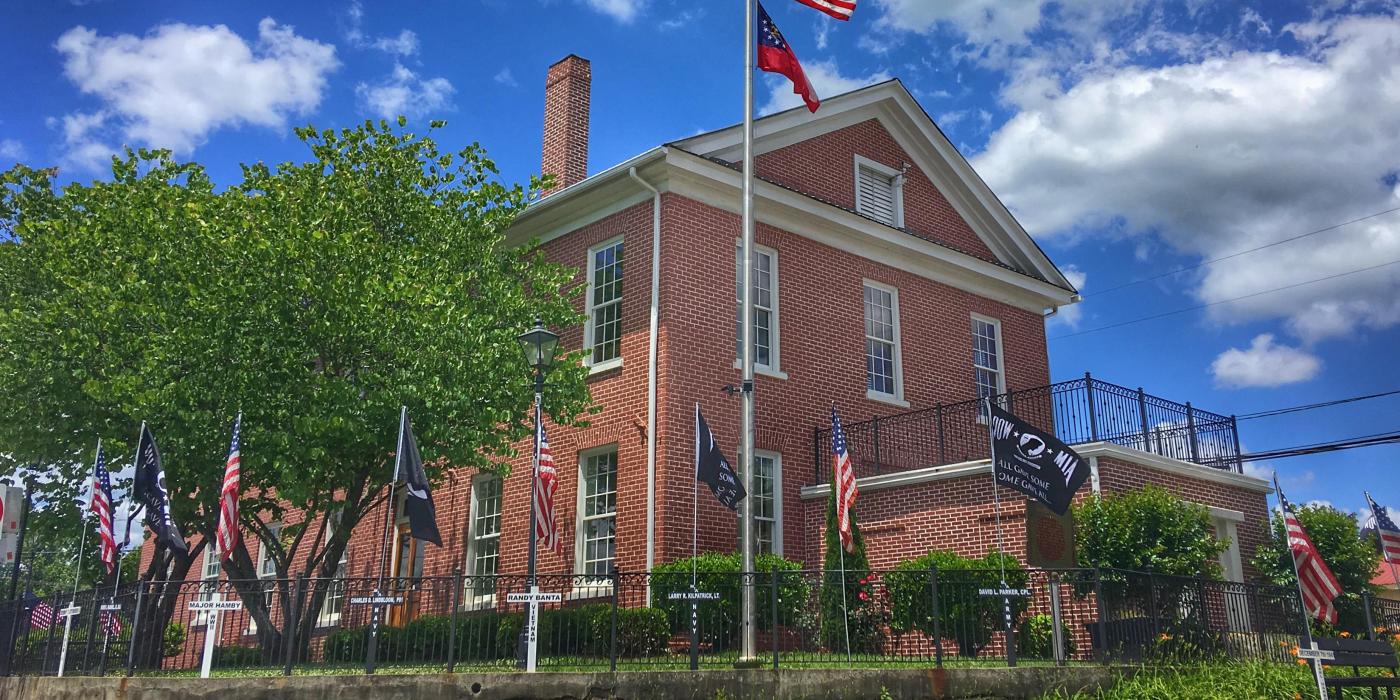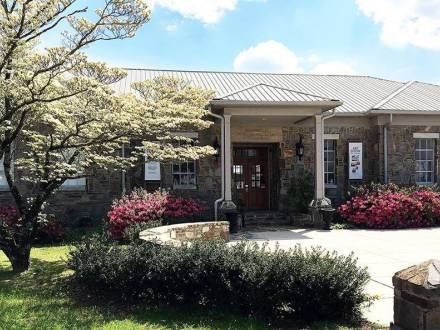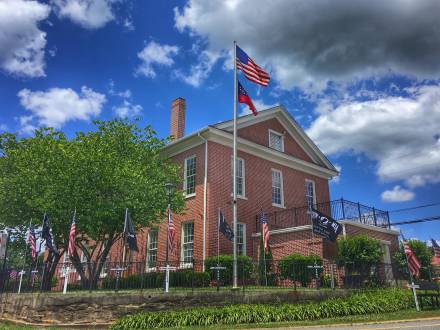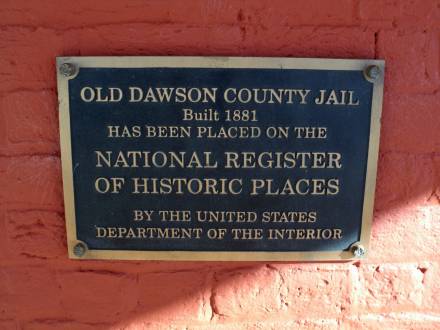Dawson County
History
Once the home of the Cherokee and Lower Creek Indian tribes, Dawson County shares a common yet rich background with most of North Georgia.
Its early days saw the beginnings of the proud Cherokee nation, the exciting North Georgia Gold Rush, and the tragic Trail of Tears.
Dawson County experienced a population boom of white homesteaders between 1790 and 1830 when the number of residents grew more than six-fold. The area continued to see population growth with the staggering Gold Rush fever beginning in 1829
Peaceful cohabitation with the Cherokee tribes proved impossible for the settlers and in 1830 the U.S. Congress passed the Indian Removal Act. Though the Cherokee valiantly attempted, through newspaper articles and pleas to Congress, to maintain their homes, they were forcibly removed on the infamous “Trail of Tears” into the western wilderness. All that remains of the Cherokee are the names with which they christened the many wonders of the area: Amicalola, Etowah, Toto Creek, and others.
During the 1830s, mines and mining operations were established throughout what was to become Dawson County, though it did retain its nature as a primarily agricultural economy.
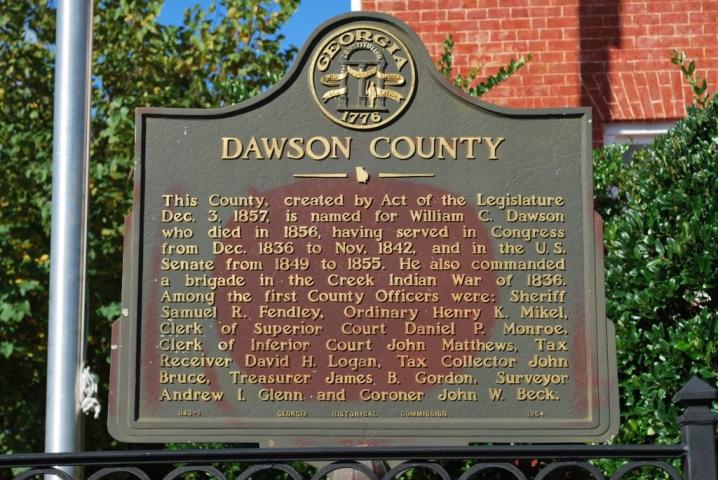
Dawson County was created by a legislative act on December 3, 1857, from portions of Lumpkin, Gilmer, Pickens, and Forsyth counties. Georgia’s 118th county (and the town of Dawsonville) was named in honor of Judge William C. Dawson, a father of the laws of Georgia and a commander of a brigade in the 1836 Creek Indian Wars. Judge Dawson served in the State Legislature, Congress, and the U.S. Senate.
Judge Dawson probably would have frowned at the flouting of the law that criminalized alcohol production in the area after Congress passed the 1919 Volstead Act, beginning the era of Prohibition and moonshiners. Dawson County was a significant source of illegal corn whiskey for Atlanta both during and after the Prohibition years. Bootleggers modified their automobiles to improve speed and handling as they raced through the mountainous area, eluding the police and “Revenuers.” When the Volstead Act was eventually abolished, the moonshiners’ cars were used for entertainment, a pastime that would give birth to modern stock car racing and NASCAR.
Dawson County is a veritable playground for those who love the outdoors. In 1957 the Appalachian Trail was re-routed and included a new end-point approximately eight miles north of Amicalola Falls State Park, which established Dawson County as a major destination for hikers from around the world. Simultaneously, the 39,000-acre Lake Lanier was formed from the flooding of the Chattahoochee River plain, drawing boaters, canoeists, and anglers to its waters, and campers to its Dawson County shores.
The Georgia 400 highway to Atlanta, constructed in the 1980s, made this area even more accessible. This combined with the beauty of Amicalola Falls, Lake Lanier, and the development of the North Georgia Premium Outlets, has changed Dawson County from a quiet mountain hideaway to one of Georgia’s fastest-growing locales. Though progress has left its mark, the area retains the historic ambience, charm, and astonishing natural beauty that have long been the hallmarks of Dawsonville and Dawson County.
The Civil War
While most of Georgia was staunchly Confederate during the Civil War, some areas, including Dawson County, really did pit brother against brother over the conflict. While five Confederate units were raised in Dawson County, Unionists had a stronghold here, too, and men from Dawson, Pickens, and Union counties created the First Georgia State Troops Volunteers, a full Union regiment.
Dawson County Historic Jail
54 Georgia Highway 53 West Dawsonville, GA 30534
Georgia Racing Hall of Fame Museum
415 Highway 53 East Dawsonville, GA 30534
Motorsports
Georgia Racing Hall of Fame Museum
415 Highway 53 East
Dawsonville,
GA
30534
Northeast Georgia History Museum
322 Academy Street Gainesville, GA 305306
Museums
Northeast Georgia History Museum
322 Academy Street
Gainesville,
GA
305306

